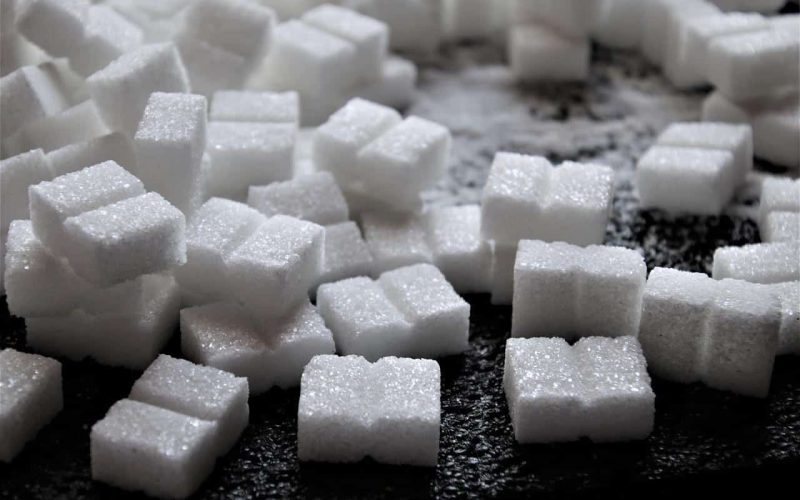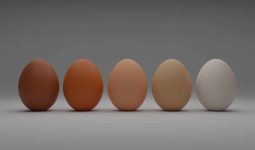There are many different types of sugars worldwide, such as glucose, fructose, sucrose, and lactose.
- Glucose is a type of sugar commonly found in fruits.
- Fructose is also a sugar found in plants that bind to glucose.
- Sucrose is a common sugar, also called table sugar.
- Lactose is a type of milk sugar.
All of these sugars have different molecular formulas and properties. The difference between Granulated sugar and caster is not much because they are both types of sucrose sugar. So, what is the difference between granulated sugar and caster sugar?
What is Granulated Sugar?
Granulated sugar is a solid sugar converted into recognizable, relatively large crystals. It usually has a white paper color and is widely used in baking.
Granulated sugar is produced from sucrose. Sucrose is a sugar mainly obtained from sugar cane and made up of a mixture of fructose and glucose.
Granulated sugar is usually resistant to dissolution, so it generally does not cake at high temperatures. This non-caking property makes transportation of granulated sugar easier.
Large grains of sugar will be harder to dissolve than small grains. Granulated sugar is used because breaking down sugar into crystal grains efficiently manages large amounts of sugar.
Granulated sugar is more commonly used in making pastries, where the sugar is incorporated into the bulk of the batter rather than as a topping.
Sugar is a type of carbohydrate. And there are two important types of sugars, but not the only ones: monosaccharides and disaccharides.
Monosaccharides consist of a single sugar unit or molecule. These include glucose, which is known as blood sugar, and fructose, also called fruit sugar.
In contrast, disaccharides are made up of two fused monosaccharides. Two examples of disaccharides are sucrose and lactose.
Sucrose is table sugar. It can be liquid or solid, and the usual way to make solid sugar is granulated sugar.
Originally, sugar could only be produced in liquid form as a syrupy substance extracted from sugar cane. Converting sugar into granular crystals was first developed in India around 350 AD.
In fact, the word sugar comes from the Sanskrit word sharkara, which means a substance made of grains.
The production of solid granulated sugar gradually spread to the Mediterranean world and beyond. In the 16th century, sugar cane plantations were established in America, further expanding the scope of sugar production.
Modern granulated sugar was first introduced in the middle of the 19th century. It was introduced in 1853 at a sugar refinery in Boston, USA, although it was not mass-sold until the late 19th century.
Today, granulated sugar is produced worldwide, and it is what most people think of when they hear the word sugar.
What is Caster Sugar?
Caster sugar, also called castor sugar, is small enough to be dispensed via a caster, a device used to apply salt, sugar, pepper, and other grains to a dish. It is similar to powdered sugar but with larger grains.
Compared to larger forms of sugar, caster sugar can readily be dissolved and used to make cocktails. As a result, it is most often used in bars.
Other recipes where rapid sugar dissolution is important also call for caster sugar. Castor sugar dissolves easily because the sugar crystals are tiny, aiding the dissolution process.
Homemade caster sugar is made by grinding larger sugar grains into smaller grains. This sugar is often used as a cooking topping.
For much of the history of sugar processing, sugar came in large loaves that needed to be broken down into smaller crystals to be used effectively.
For this reason, the possible size of the sugar crystals was limited by technological means. It wasn’t until the 19th century that caster sugar became widely available.
Similarities Between Granulated Sugar and Caster Sugar
Granulated sugar and caster sugar are granular forms of sugar that are chemically composed of sucrose. They are also very common forms of sugar.
Caster sugar can be made from granulated sugar by grinding it into crystals the size of caster sugar crystals.
Key Difference Between Granulated Sugar and Caster Sugar
Granulated sugar and caster sugar are similar in many ways but different in others. Differences include the following:
The Making
Sucrose is used to make granulated sugar, which is made from sugarcane and a mixture of fructose and glucose, while caster sugar is made from finely crushed granulated sugar.
Size
Caster sugar has a much smaller grain size than granulated sugar because it can be made by finely grinding granulated sugar. Granulated sugar is 0.5mm in diameter, and caster sugar is 0.35mm in diameter.
Dissolving Ability
Caster sugar dissolves more readily in water or liquid because it is made up of smaller crystals than granulated sugar.
Moisture in Granulated Sugar Compared to Caster Sugar
Granulated sugar absorbs less moisture due to its large grain size. This is one of the reasons granulated sugar does not clump easily. Since it is smaller, caster sugar absorbs more moisture and is more likely to clump or cake.
Use for Cooking
Granulated sugar is generally used when sugar is incorporated into the bulk of a dish, such as pastries or making toffee, and in regular cooking.
On the other hand, caster sugar is used more often. It is used as a topping in pastries and other baked foods (cakes and all) and also in the preparation of Meringues and Pavlova.
Summary of The Difference between Granulated Sugar and Caster Sugar
Granulated sugar is made up of crystal grains of sucrose, which is a disaccharide containing glucose and fructose. Sucrose is usually found in sugar cane and fruits.
The large size of typical granulated sugar crystals means they don’t clump or harden as easily, but it also means it’s harder for the sugar to dissolve.
Caster sugar is smaller than granulated sugar. The small crystals make it easier to dissolve, but caster sugar is also more likely to clump at high temperatures.
Caster sugar is often used to make cocktails because of its ease of dissolution. It is also often used as a topping, while granulated sugar is often incorporated inside cakes.
Granulated sugar from sugar cane was first developed in India around 350 AD. From India, it spread to Persia, China, and the West and reached the West Indies in the 16th century.
It was around 1850 that modern granulated sugar was first produced and became widespread in the late 19th century.
Caster sugar became widely available in the 19th century when breaking sugar loaves into the correct size sugar crystals became practical and affordable.
Conclusion
Although there are differences between granulated sugar and caster sugar, so there are similarities. They are both chemically composed of only sucrose and taste the same.
Despite this, its properties change when caster sugar is made from granulated sugar. This change in characteristics and properties makes it very easy to use, and as a result, it is used in more things than granulated sugar.
Caster sugar is more affordable than granulated sugar and clumps easily, so it is preferable to granulated sugar.








